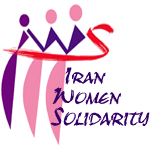On December 30th, the Washington Post, highlighted a photo essay covering an end to end ceremony of what the Post titled “ Female Circumcision in Kurdistan . The 15 pictures depict the horrible experience of a seven-year-old girl who is taken by her mother to be circumcised in Kurdish Iraq, where more than 60 percent of women have undergone the traditional and controversial procedure. The practice of Female Genital Mutilation ( FGM) is one of the many forms of violence against women and a violation of women’s human rights. It is deep rooted in gender inequality which is the cause and consequences of violence against women. Although FGM is being practiced in many Muslim majority societies, but it is a pre-Islamic tradition which aims at controlling women’s sexuality. In small villages, this surgical procedure is being done at home and not in a medical facility. The complication and even infection often endanger the health and well-being of these young girls. Although the tradition is mainly prevalent in African countries but it also being practice in several countries in Asian continent. After UN conference in Beijing, the practice was banned in several countries but still is widespread as young women who have undergone the surgery are more desirable for marriage.
The publication of these horrible photos and the decision of post photo editor was objected and challanged which you may read about it [here->http://thetravelphotographer.blogspot.com/2008/12/wp-female-circumcision-in-kurdistan.html] .
[ World Health Organization->http://www.who.int/mediacentre/factsheets/fs241/en/] has published the following fact sheet in May 2008 about FGM:
“Female genital mutilation (FGM) includes procedures that intentionally alter or injure female genital organs for non-medical reasons.
– An estimated 100 to 140 million girls and women worldwide are currently living with the consequences of FGM.
– In Africa, about three million girls are at risk for FGM annually.
– The procedure has no health benefits for girls and women.
-Procedures can cause severe bleeding and problems urinating, and later, potential childbirth complications and newborn deaths.
– It is mostly carried out on young girls sometime between infancy and age 15 years.
– FGM is internationally recognized as a violation of the human rights of girls and women.
Female genital mutilation (FGM) comprises all procedures that involve partial or total removal of the external female genitalia, or other injury to the female genital organs for non-medical reasons.
The practice is mostly carried out by traditional circumcisers, who often play other central roles in communities, such as attending childbirths. Increasingly, however, FGM is being performed by medically trained personnel. FGM is recognized internationally as a violation of the human rights of girls and women. It reflects deep-rooted inequality between the sexes, and constitutes an extreme form of discrimination against women. It is nearly always carried out on minors and is a violation of the rights of children. The practice also violates a person’s rights to health, security and physical integrity, the right to be free from torture and cruel, inhuman or degrading treatment, and the right to life when the procedure results in death.
For more reading on this issue please click [here->http://www.who.int/mediacentre/factsheets/fs241/en/].

